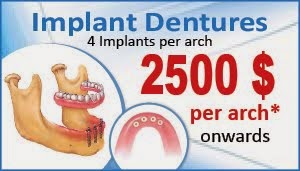There are several different options for braces, which vary not just on looks, but also material, time of treatment, cost, and location on the teeth or mouth.
Traditional Metal Braces
Traditional braces are the standard metal type most people think of when they hear the term "braces". More recent innovations in this style including mixing the metal with nickel titanium, instead of solely stainless steel. A problem with traditional braces is that they may stain the tooth, and they are also very visible. If you are allergic to nickel, you can get gold plated braces (just as you might do for fillings). Traditional braces are made of stainless steel and are fixed to each individual tooth, through a process called bonding, where the bracket is adhered to the front of the tooth. They are the cheapest types of braces.
Ceramic Braces
Ceramic braces are applied with the same method as traditional braces, the brace is individually bonded to each tooth. The difference is the type of material and subsequent look. Many are translucent, and ceramic braces may sometimes be referred to as clear braces. However, you will still see the metal line that goes along the front of both the top and bottom rows of teeth, where the ceramic piece bonds to the tooth. The trade-off to the look unfortunately is that ceramic braces are not as sturdy. They are brittle and can break.
Lingual Braces
Lingual Braces go behind the teeth and are invisible from the front. As you might be able to tell from the name (lingual meaning tongue), lingual braces can be cumbersome as they obstruct tongue movement. At first, many wearers suffer from speech trouble before adjusting to the lingual restriction. They are generally more expensive and harder to maintain.
Clear Braces
Clear Braces are clear plastic aligners, usually available in progressive trays that are changed over time. These types of braces come off for eating and brushing. A tray, or aligner, is worn for a set period of time, until the teeth correct themselves to that phase of the alignment process, and then a new set is worn. These are barely noticeable and don't require wires or tightening. Invisalign is one type of clear braces, as are Originator and ClearCorrect. They are usually not used for major corrections and may be administered by dentists as well as orthodontists.
Smart Brackets
Smart Brackets are a very new and not yet established type of braces. They contain a microchip that measures the forces acting on the tooth and bracket. Ideally, using this technology will shorten the time of treatment, the patient's discomfort, and hopefully related expenses.











0 comments:
Post a Comment